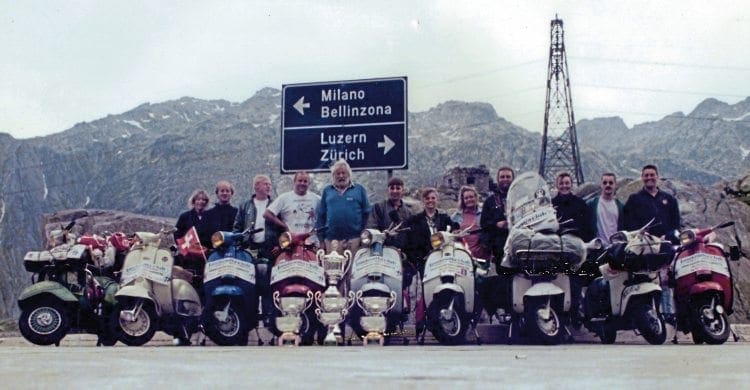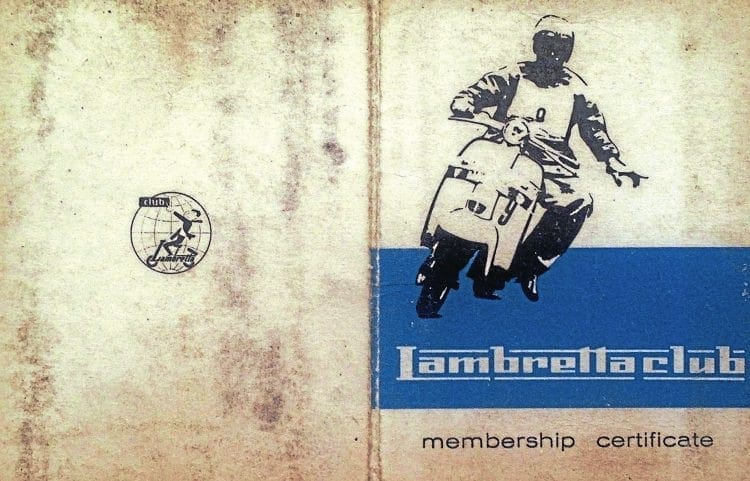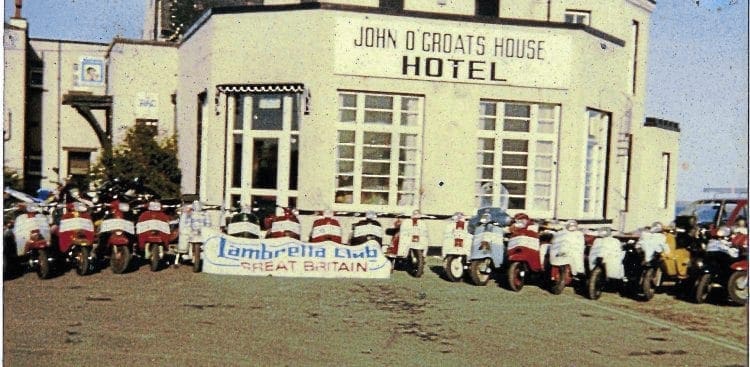Today the Lambretta Club of Great Britain (LCGB) is a thriving organisation. With more than 6000 members and substantial operating funds the future for the club looks ever more secure. This has not always been the case however, and over the past 50 years the LCGB has been through some very turbulent times. Stu Owen explains…
The roots of the club go all the way back to the mid-1960s when Lambretta ownership was at its greatest and the membership stood at over 100,000. When Lambretta production ceased in 1971 the LCGB went into freefall, only to be resurrected towards the end of the decade. In this article, we take a look back how, against the odds, the LCGB rose back from the ashes.
The mighty fall
The very beginnings of the LCGB can be traced back to the days of The British Lambretta Owners Association (BLOA) which was formed by Lambretta Concessionaires during the 1950s. Anyone purchasing a new Lambretta automatically got membership to BLOA so it came as no surprise that the membership numbers would rise dramatically. By 1965, and now under the guidance of Bob Wilkinson, BLOA was rebranded the LCGB. The club was employing full-time staff to cope with the greater administration and organisation required of the large membership.
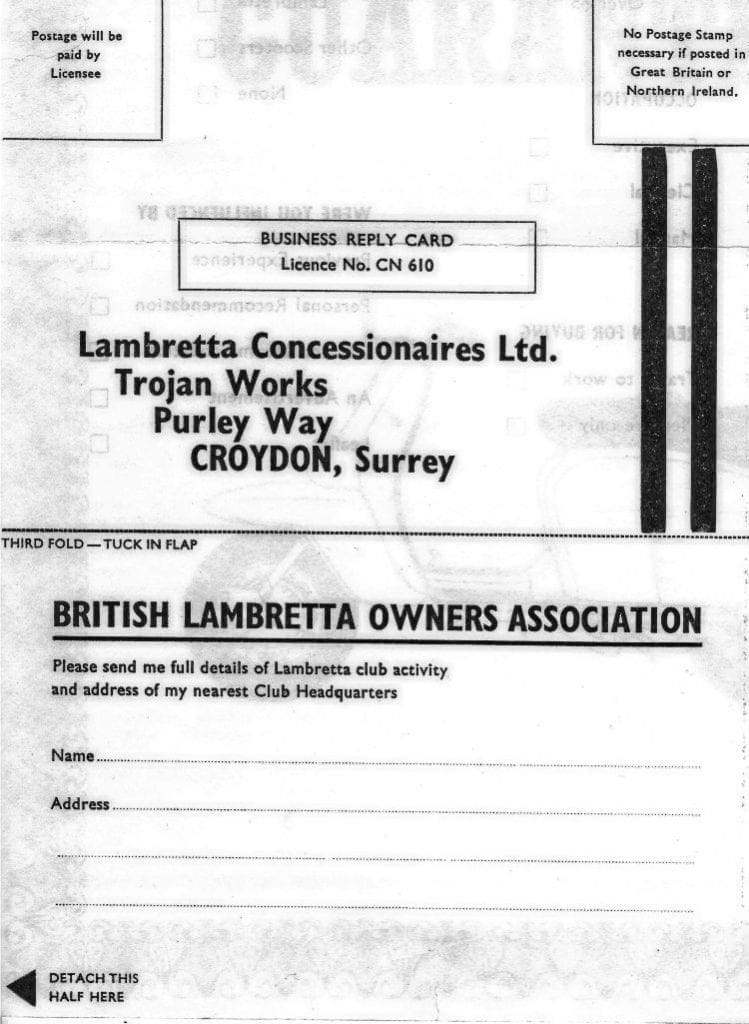
In the early 1970s, with the Italian Lambretta finished, the only new machines were coming in from Spain. But as the popularity of the Lambretta waned membership gradually declined. By the mid-1970s there were no funds coming in. The club ran out of money and ceased to exist. What was left over was mothballed and put in the trust of Mike Karslake. It stayed that way until 1978.
Resurrection
During the mid-1970s there were still areas of the country where small pockets of Lambretta enthusiasts thrived, none more so than the north of England. During 1977 several members of Widnes Saints scooter club approached Mike Karslake with the idea of re -forming the LCGB. Led by Kevin Walsh and John Illing a meeting took place to see if this proposition could be feasible. The outcome was to reform the LCGB in 1978 to see if it could grow and become financially viable. The founding members of the reformed club were:
John Illing, general secretary
Gordon Eves, treasurer
Pete Sherwen, newsletter
Kevin Walsh, public relations officer
Keith Cutler, administration
Keith Sharps, club shop
Nigel Ashbrook, committee member
Initial reaction to the club re-forming was encouraging as the membership, which incidentally cost £2 per year, steadily rose. The relaunching of the Lambretta GP by Scooters India Limited at the same time had certainly helped create more interest. By 1979 with the release of Quadrophenia and the Mod revival in full flow membership grew to several hundred.
Trouble ahead
With the resurgence of the club came the organising of events. Though this would require greater manpower, at the same time it could be very lucrative to the LCGB. However one such event would almost finish the club in its entirety. Mike Karslake and LASCA had been running the Southend rally since 1977. On the August bank holiday in 1979 the rally to Southend would be run by the LCGB. It was marred by trouble from the outset. With the police heavily involved and at one point the Special Patrol group, the fledgling committee had to take responsibility for the mindless violence and vandalism which occurred over the weekend.
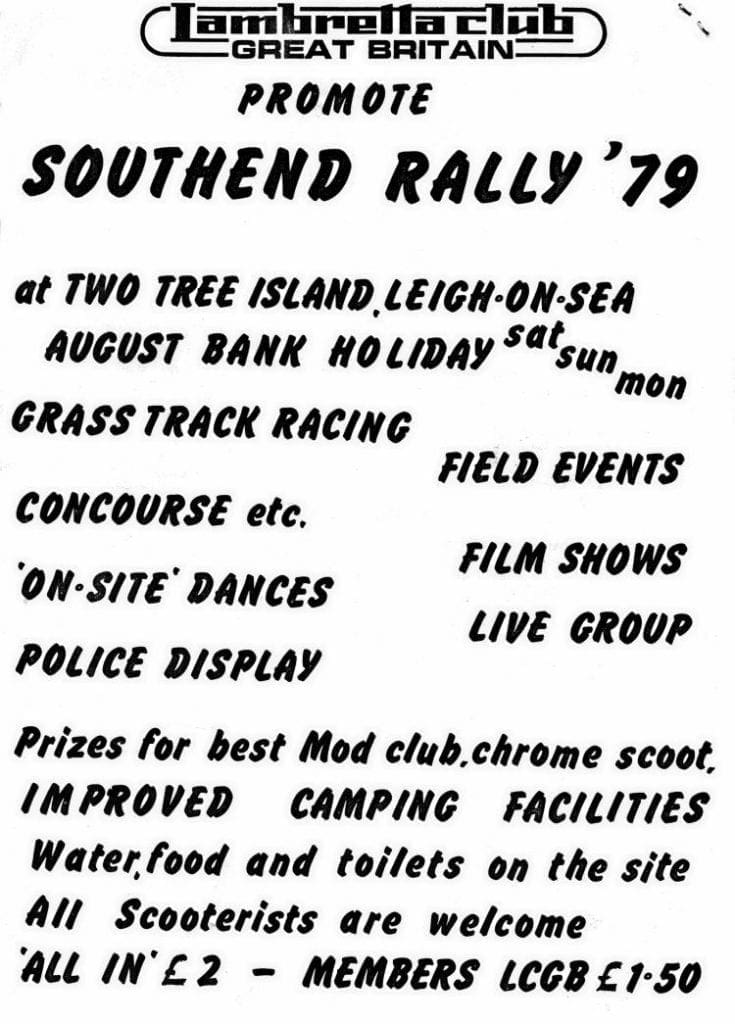
Though most of the committee were saddened by the events that took place they vowed to carry on. However, both Gordon Eves and Keith Cutler left the club, probably as a direct result of the incident. Problems of violence and trouble at other events marred the LCGB throughout the year. Taking advice from those who had been around a lot longer the committee were advised to run the club at a lower key for a year or two so things could settle. As a result no future events and rallies were planned.
A new beginning
Club magazine Jet Set was introduced in 1981 – using the same name as the one produced by the LCGB in the 1960s. To separate them the reintroduced magazine would be called New Jet Set this was free to members but was also sold separately to help cover costs.
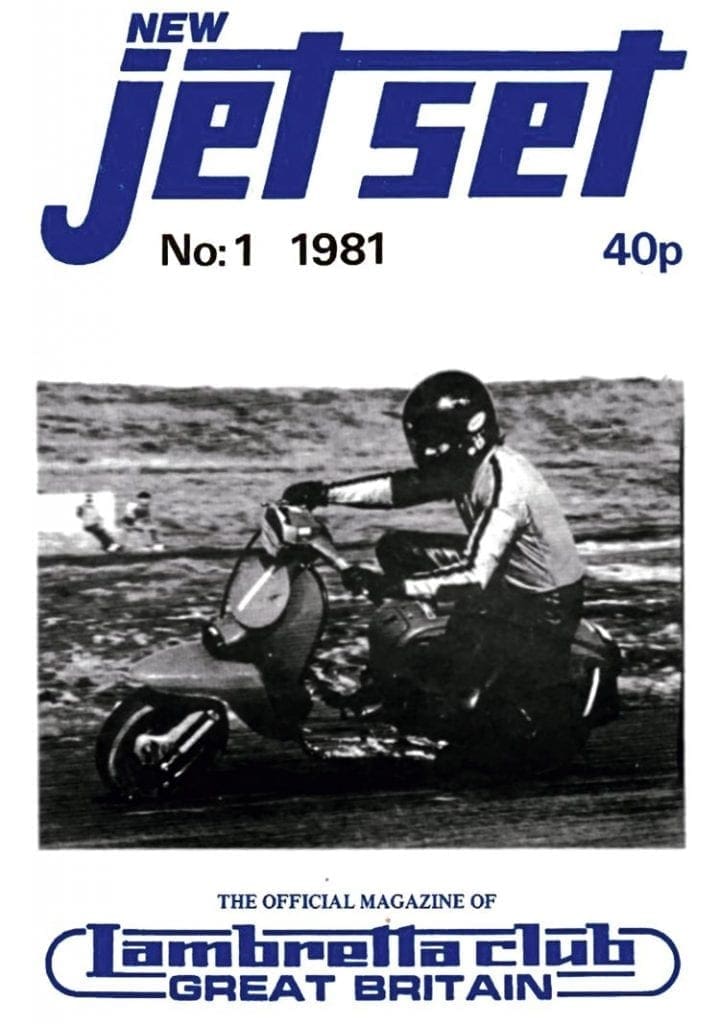
As New Jet Set only came out four times a year a bi-monthly newsletter was also issued to club members to let them know of events and news. All of this was done on a rather ancient Gestetner duplicating machine which the club had inherited from the original LCGB. It had clearly seen its best years by then. Nearly every committee member had been made to use it at one time or another as if it was some sort of initiation ceremony. Regardless of the machine’s downfall or reluctance to work properly, it played an important part of getting the magazine and newsletter published.
By 1982 and with trouble at any scooter event whether organised by LCGB or not, things were not getting better. Membership had rapidly declined and several of the committee had resigned, most feeling disillusioned by what was happening on the scene.
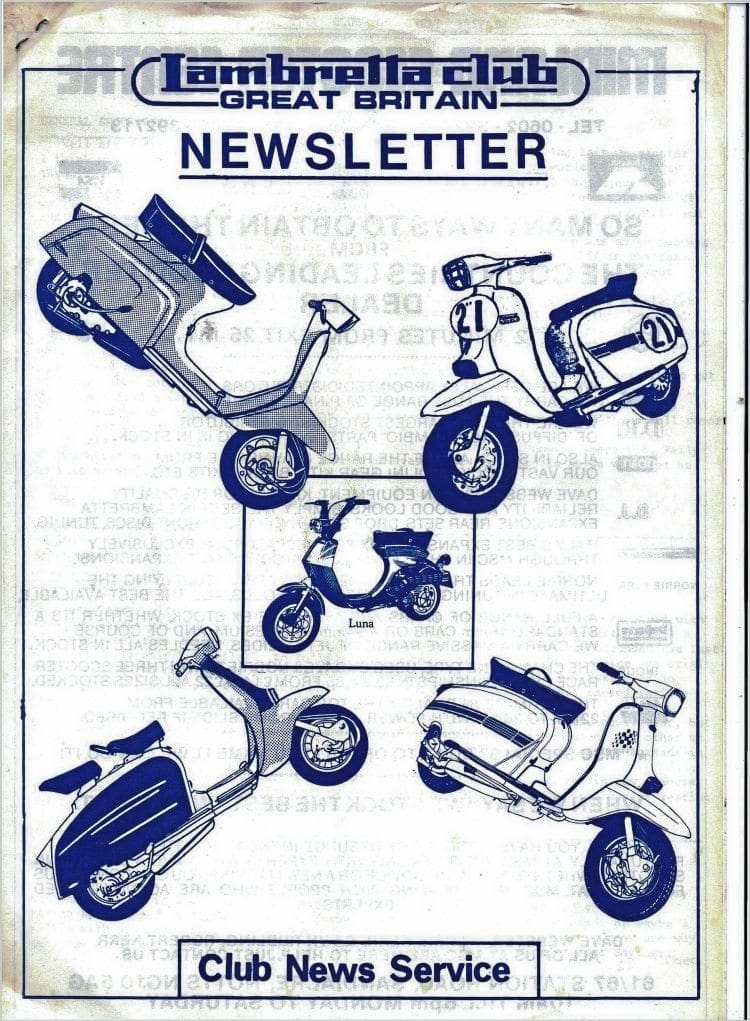
National scooter runs at that time were loosely organized to say the least. The only real way of communicating to scooterists was though the only publication available at that time, Scootermania, which was run by Martin Dixon. After the number is meeting at the beginning of the year, Scootermania would publish a list of national rally locations and dates. The LCGB were reluctant to get to involved, still haunted by the events of Southend in 1979. Even so they would slowly do so and change the way rallies were run in the future.

In 1983 the committee of the LCGB was as follows: Mike Karslake (president), Kevin Walsh (editor Jet Set/general secretary), John Coxon (honorary chairman), Jeff Smith (admin secretary), Nigel Ashbrook (treasurer), Keith Sharps (club shop), Mark Haines (super dealer scheme), Alan ‘Butch’ Kay, Pete Sherwen, Andy Francis, Neil Wightman, Mark Sergeant and Richard Dawson.
Though some of the committee had been there since the LCGB re-formed in 1978, many were new appointments. With them came a lot of fresh ideas and commitment, something that had been needed for quite a while.

In late 1983 changes were made once again, both Nigel Ashbrook and Mark Haines left to pursue their business interests. Unfortunately running the LCGB was a timely exercise as the club was only run on a voluntary basis. This situation would always cause committee members to leave who didn’t have the time available; luckily there were always new members keen to take up the vacated roles. Richard Dawson would now take on the role of club public relations officer while at the same time running the super dealer scheme. This was a new idea and needed promoting. Over the coming years it would gain popularity both among Lambretta owners and dealers.
Nationals
By 1984 the nationals had grown immensely, with several thousand scooterists in attendance at each rally. At the beginning of the year, during the number 1s meeting, tensions between the LCGB and Martin Dixon had come to a head. The resulting outcome was from now on the LCGB would run the nationals. While this was a big responsibility to take on it may also have helped to boost the club’s popularity. Even so, attracting new members was still rather difficult and the financial situation was becoming rather precarious.

Before long the National Runs Committee (NRC) was formed to take control of the nationals. As there were several parties not happy with the LCGB being so involved it seemed the best all round solution. Even so the NRC was made up of several of the LCGB committee, most notably Kevin Walsh, Jeff Smith and Richard Dawson. This wasn’t the ideal situation but it at least took the pressure off the LCGB who could now concentrate purely on the club.
A club for members
Though the LCGB still had some input in to the nationals their role became less and less. In 1985 this gave way to the members’ rallies forming, with the Moore Arms in Shropshire being the first. These became hugely popular with club members who were fed up of the problems the nationals attracted.
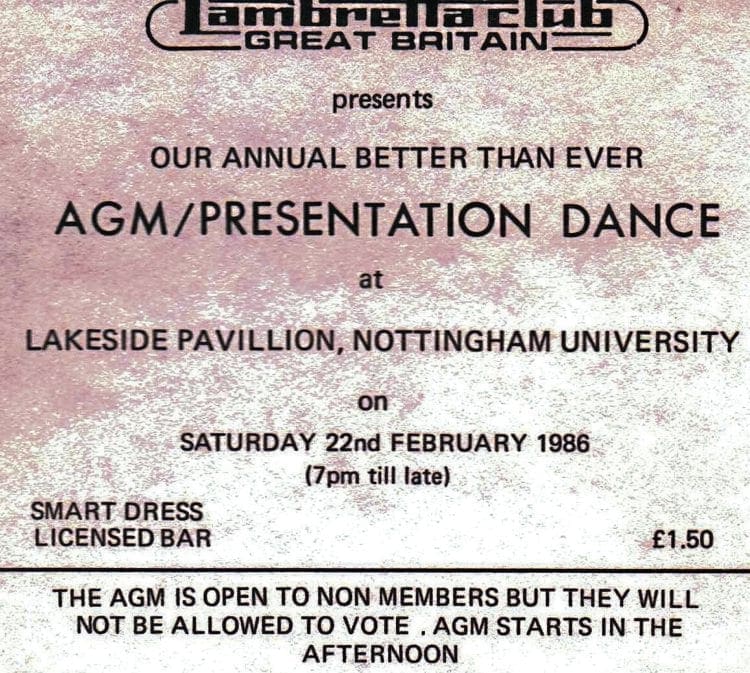
In the same year, the LCGB held their first custom show at Telford. Being a great success, it proved the club could exist on its own. It would pave the way for the Annual LCGB super custom show which over the years has become a scootering institution in its own right.
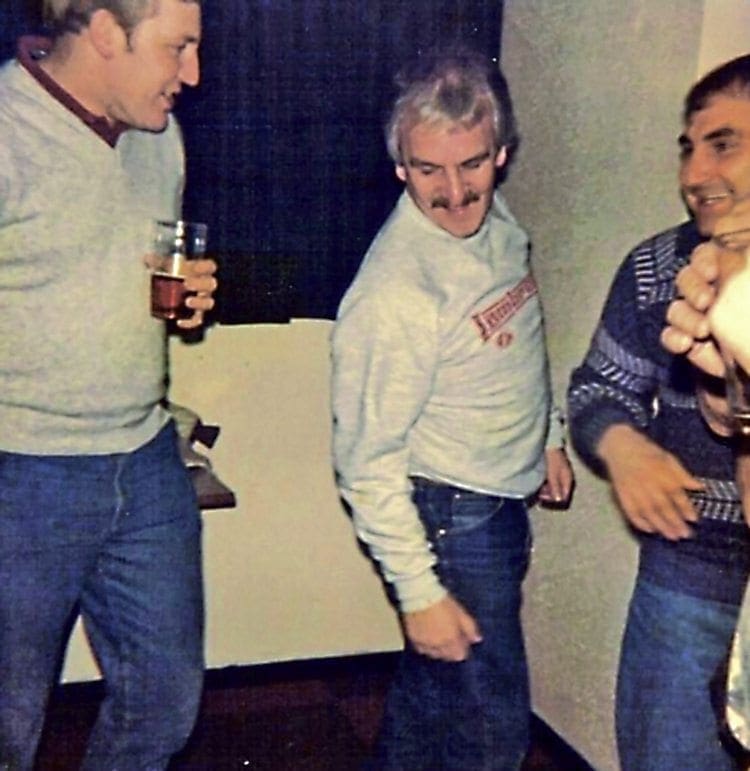
In late 1985 Jeff Smith became chairman of the club, replacing John Coxon who left. This would mean Kevin Walsh would now be the only surviving member of the committee which re-formed the club in 1977. With Jeff Smith chairman of both the LCGB and the NRC this was not an ideal situation and one which would see great tensions between him and Kevin Walsh during 1986.

The club had a subdued year in 1986. It was a transitional period in reality. While the members’ rallies increased and the custom show still took place, the situation got progressively worse. Membership had dropped to around 250 and the club’s finances at one point dropped into the red. Even so, the committee had come too far now to let things fall apart. It was coming up to 10 years since the LCGB had reformed and it had been a constant struggle throughout that time. The 1986 AGM and presentation would be a difficult one but hopefully better things were to come.
Back from the brink
With the 1986 AGM came a new hope that the club could move forward. The most vital thing was to increase membership, so everything was done to promote it. With two national publications in Scootering magazine and also Scooter Scene, there was now a decent platform to advertise. At the same time membership forms started to appear on most dealers’ counters. If numbers failed to increase it wouldn’t be through the lack of trying. With a full year’s membership at just £7 it was good value for money.

Jet Set magazine had always been available to buy so you didn’t need to be a member to obtain a copy. With the decision to scrap the newsletter and make Jet Set bigger it now became a members-only publication. While this may increase membership as those that bought the magazine would need to join to get it, at the same time it was a financial gamble. Jet Set had always being the biggest drain on club resources and now more than ever. Luckily both Midland Scooter Centre and Bedlam scooters would sponsor the front and back pages which would relieve some pressure on the club funds.
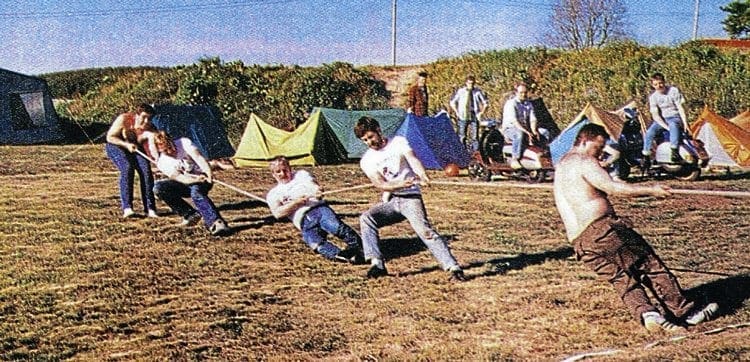
Members’ rallies would continue to become more popular in 1987, with attendances growing at each one. Slowly as the year went by membership also began to rise again. Now the LCGB were virtually free from involvement of the nationals it was as though the shackles had been released. Lambretta owners were beginning to return back to the club as they now felt it was going back to its roots and looking after its members.
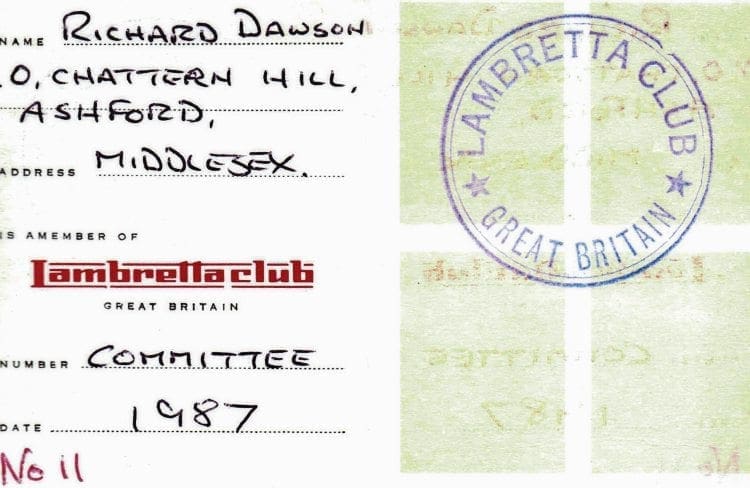
Despite the good news there were still problems ahead most notably at committee level. With key changes in personnel, this once again would put a strain on the club and those that run it. A case of one step forward and two steps back, it seemed.
With all the upheaval that was happening no one could predict what future if any the LCGB would have. However bigger things were happening elsewhere which would have a profound effect on the LCGB, finally making it become the success it deserved. But more about that in the next instalment!
Next month John O’Groats to Land’s End, The Birth of the Euro Lambretta and the Heyday of the Club Rallies.
Words: Stu Owen – with special thanks to Nigel Ashbrook and Richard Dawson for their help with this article.
This article was taken from the July 2016 edition of Scootering, back issues available here: www.classicmagazines.co.uk/issue/SCO/year/2016

